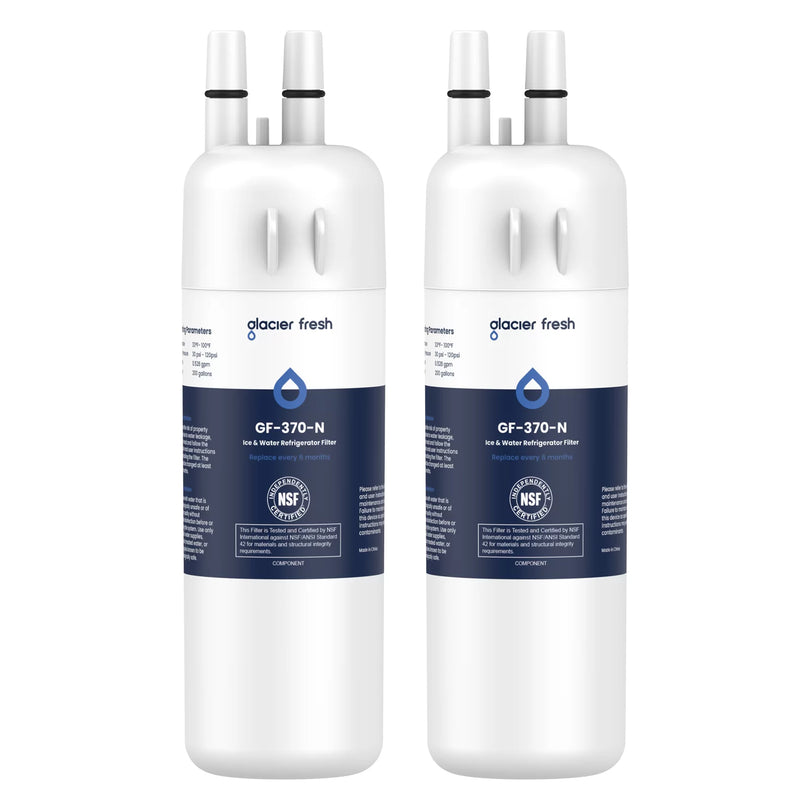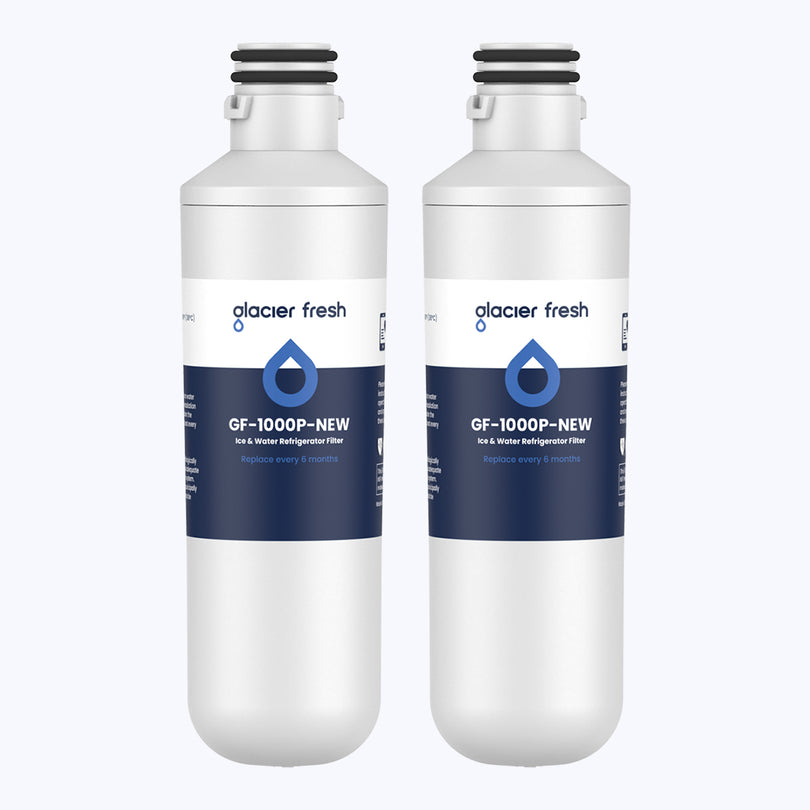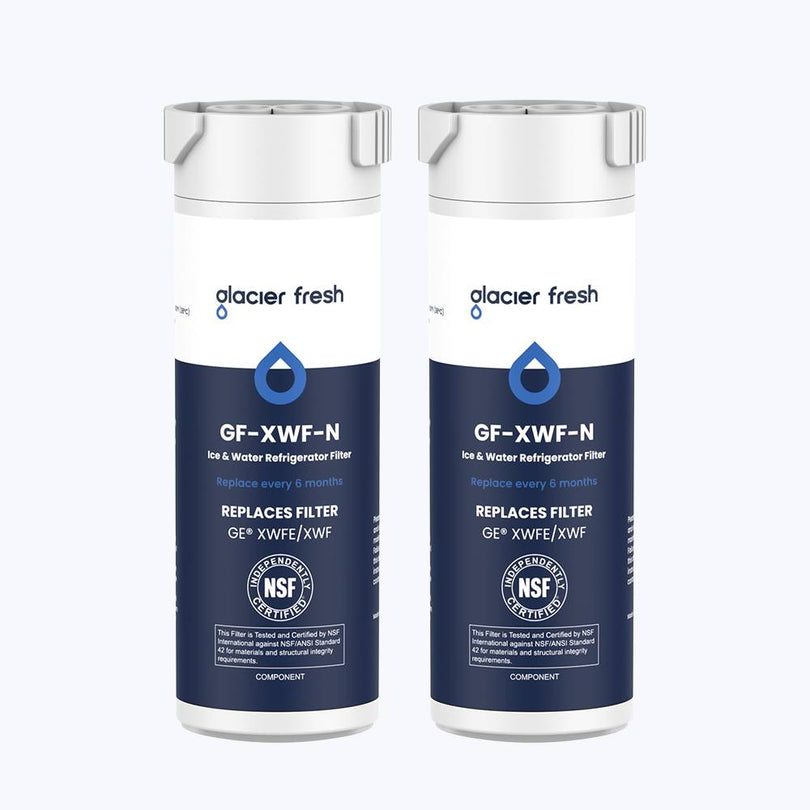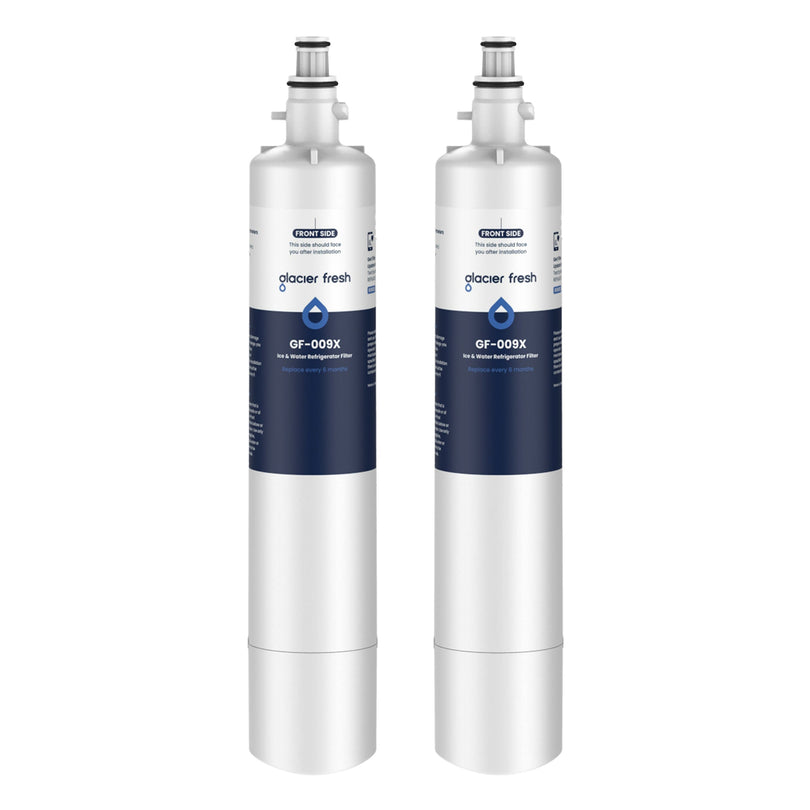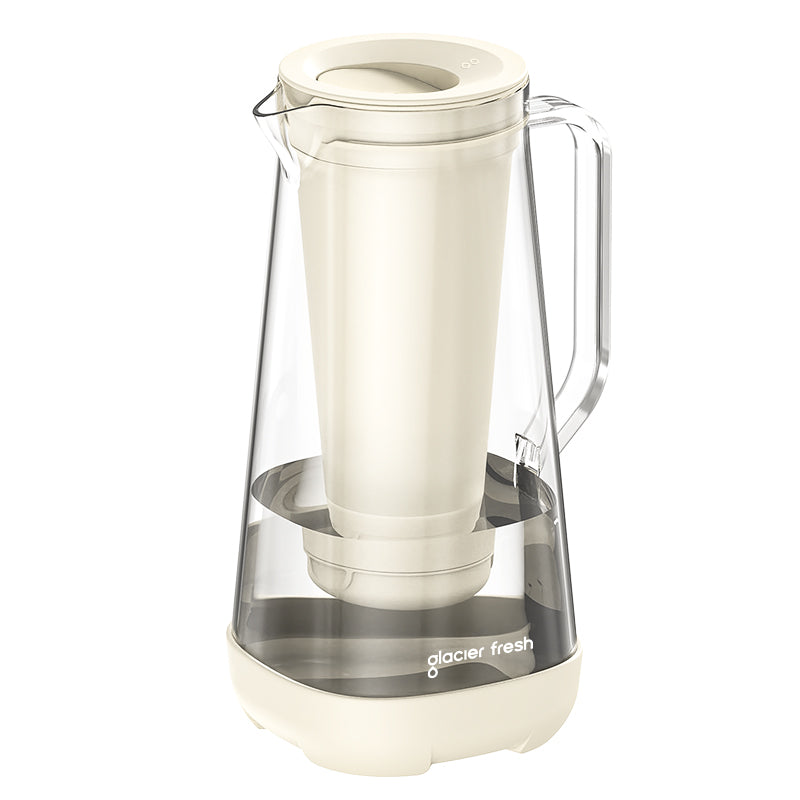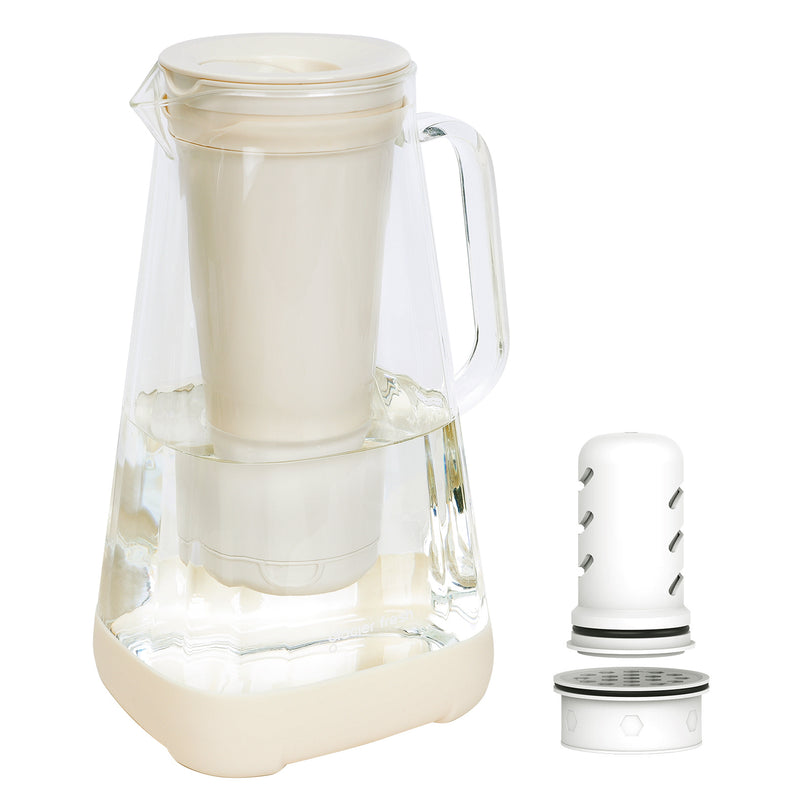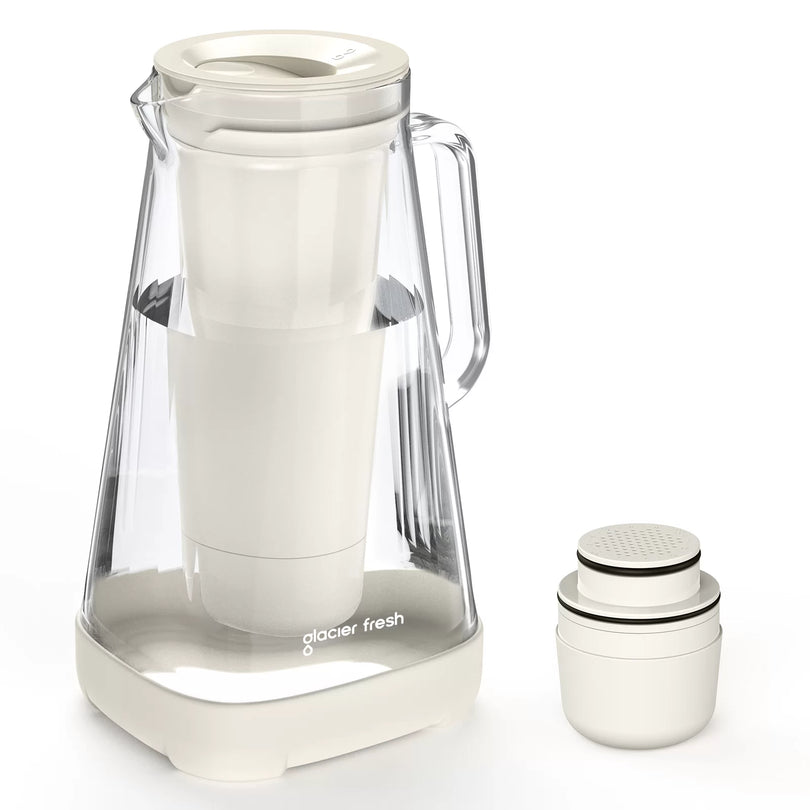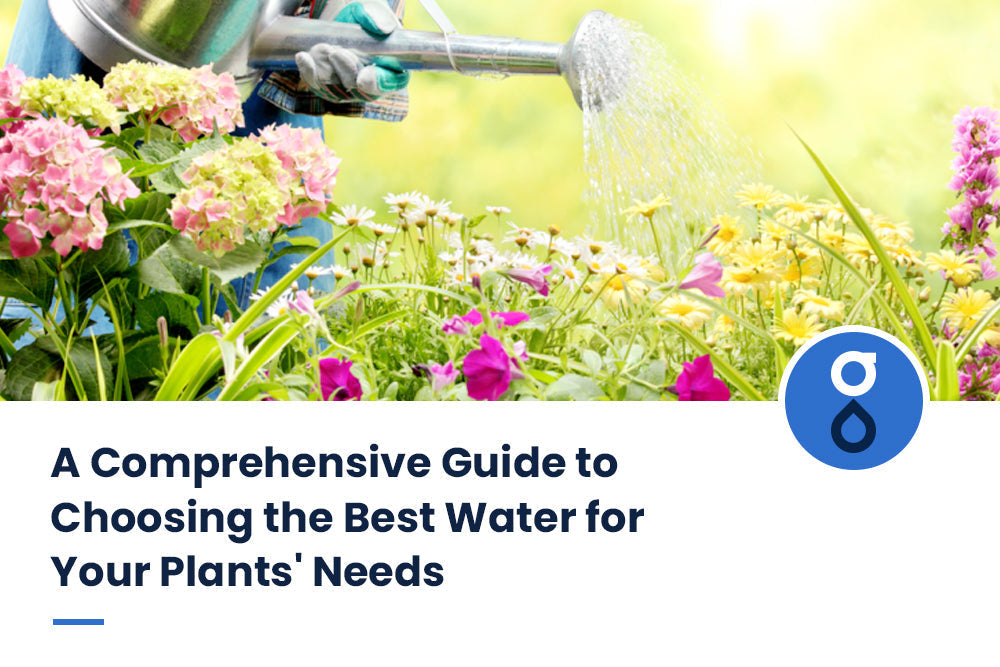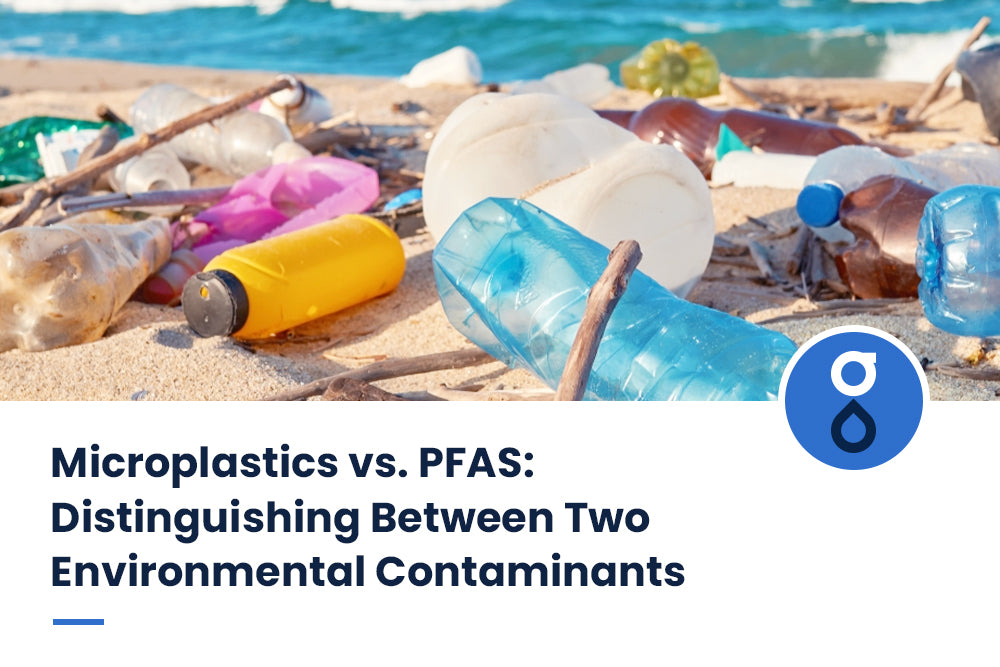Table of Contents:
Den Wasserbedarf von Pflanzen verstehen
Destilliertes Wasser VS Leitungswasser
Regenwasser VS gefiltertes Wasser
PH-Gleichgewicht für maximale Nährstoffaufnahme
Den richtigen Bewässerungsplan wählen
Tipps zum Gießen Ihrer Pflanzen
FAQs
Abschluss
Bei der Pflege Ihrer Pflanzen ist es am wichtigsten, dafür zu sorgen, dass sie die richtige Art von Wasser bekommen. Die Art des Wassers, das Sie Ihren Pflanzen geben, kann für ihre Gesundheit entscheidend sein. Daher ist es wichtig, die verschiedenen verfügbaren Wasserarten und die besten Praktiken zum Gießen Ihrer Pflanzen zu kennen. In diesem Leitfaden werden die verschiedenen Wasserarten erläutert, wie Sie den pH-Wert testen und den besten Gießplan für Ihre Pflanzen festlegen. Lassen Sie uns anfangen!
Den Wasserbedarf von Pflanzen verstehen

Um die beste Wasserart zu bestimmen, müssen Sie den Wasserbedarf Ihrer Pflanzen kennen, da dieser ihr Wachstum und ihre allgemeine Gesundheit beeinflussen kann. Verschiedene Pflanzen benötigen je nach Art und Umgebung unterschiedliche Wassermengen. Sukkulenten und Kakteen brauchen beispielsweise weniger Wasser als andere Pflanzen, da sie Wasser in ihren Blättern und Stängeln speichern. Andererseits benötigen Pflanzen, die in Gebieten mit hoher Luftfeuchtigkeit wachsen, mehr Wasser als solche in trockenen Gebieten.
Beim Gießen Ihrer Pflanzen müssen Sie unbedingt die Art des Bodens berücksichtigen, in dem sie stehen. Lehmböden speichern Wasser länger als Sandböden, die schnell abfließen. Daher müssen Pflanzen, die in Lehmböden wachsen, weniger häufig gegossen werden als Sandböden. Auch die Größe des Topfes oder Behälters spielt eine Rolle bei der Bestimmung der Gießhäufigkeit. Kleine Töpfe trocknen schneller aus als große, daher benötigen Pflanzen in kleinen Töpfen mehr Wasser als solche in größeren Töpfen. Um sicherzustellen, dass Ihre Pflanzen das beste Wasser bekommen, sollten Sie den pH-Wert des Wassers berücksichtigen. Die meisten Pflanzen bevorzugen leicht saures Wasser mit einem pH-Wert von 6,0 bis 7,0. Wenn das von Ihnen verwendete Wasser einen höheren pH-Wert hat, können Sie ihn senken, indem Sie ein paar Tropfen Essig oder Zitronensaft hinzufügen. Wenn das Wasser jedoch zu sauer ist, können Sie den pH-Wert durch Zugabe von Backpulver oder Kalkstein anpassen. Wenn Sie den Wasserbedarf Ihrer Pflanzen verstehen und ihnen die richtige Art von Wasser geben, können Sie dazu beitragen, dass sie gesund und lebendig bleiben.
Destilliertes Wasser VS Leitungswasser
Erwägen Sie die Verwendung von destilliertem oder Leitungswasser für Ihre Pflanzen. Leitungswasser ist leicht erhältlich und praktisch, kann aber Mineralien und Chemikalien enthalten, die Ihren Pflanzen schaden können. Beispielsweise wird Leitungswasser häufig zur Desinfektion Chlor zugesetzt, es kann jedoch auch nützliche Mikroorganismen im Boden abtöten. Leitungswasser kann auch harte Mineralien wie Kalzium und Magnesium enthalten, die sich mit der Zeit im Boden ablagern und die Nährstoffaufnahme beeinträchtigen können.
Destilliertes Wasser hingegen wird durch Destillation gereinigt, wodurch Verunreinigungen wie Mineralien, Chemikalien und Schadstoffe entfernt werden. Dies macht destilliertes Wasser zu einer guten Wahl für Pflanzen, die empfindlich auf Mineralien oder Chemikalien in ihrer Umgebung reagieren. Einige Experten warnen jedoch davor, ausschließlich destilliertes Wasser zu verwenden, da ihm die Mineralien fehlen, die Pflanzen für ein gesundes Wachstum benötigen. Wenn Sie destilliertes Wasser verwenden, sollten Sie dem Boden einen Pflanzendünger beifügen, um sicherzustellen, dass Ihre Pflanzen die Nährstoffe erhalten, die sie benötigen.
Die Wahl zwischen destilliertem und Leitungswasser hängt letztendlich von Ihren spezifischen Pflanzen und deren Wasserbedarf ab. Es kann die praktischste Wahl sein, wenn Ihre Pflanzen robust sind und Leitungswasser vertragen. Destilliertes Wasser kann die Lösung sein, wenn Ihre Pflanzen empfindlicher sind und gereinigtes Wasser benötigen. Was auch immer Sie wählen, beobachten Sie Ihre Pflanzen genau und passen Sie Ihre Bewässerungsroutine an, um ihre Gesundheit und Vitalität sicherzustellen.
Regenwasser VS gefiltertes Wasser

Die Verwendung des richtigen Wassers kann beim Gießen Ihrer Pflanzen einen großen Unterschied machen. Regenwasser und gefiltertes Wasser sind beliebte Optionen, aber was ist besser? Schauen wir uns das genauer an.
Regenwasser eignet sich hervorragend zum Gießen Ihrer Pflanzen, da es kostenlos ist und natürliche Mineralien enthält, die Pflanzen lieben. Es ist jedoch wichtig zu beachten, dass Regenwasser je nach Wohnort auch Schadstoffe und Verunreinigungen enthalten kann. Deshalb ist es wichtig, Regenwasser aus einer sauberen Quelle zu sammeln und es zu filtern, bevor Sie es für Ihre Pflanzen verwenden. Gefiltertes Wasser hingegen ist eine zuverlässige Option zum Gießen Ihrer Pflanzen, da es frei von Schadstoffen und Verunreinigungen ist. Sie können ein Wasserfiltersystem kaufen oder einen Krug mit eingebautem Filter verwenden, um Verunreinigungen aus dem Leitungswasser zu entfernen. Achten Sie jedoch darauf, kein mit Wasserenthärtern behandeltes Wasser zu verwenden, da diese Ihren Pflanzen schaden können.
PH-Gleichgewicht für maximale Nährstoffaufnahme

Um sicherzustellen, dass Ihr Garten das Beste aus seiner Wasserquelle herausholt, ist es wichtig, einen angemessenen pH-Wert für eine optimale Nährstoffaufnahme aufrechtzuerhalten. Die pH-Skala reicht von 0 bis 14, wobei 7 neutral ist. Die meisten Pflanzen bevorzugen einen leicht sauren pH-Wert von 6 bis 7, aber einige, wie Blaubeeren, Azaleen und Rhododendren, mögen einen saureren Wert von 4,5 bis 5,5. Wenn Ihr Leitungswasser einen hohen pH-Wert über 7,5 hat, kann es sinnvoll sein, den pH-Wert vor dem Gießen Ihrer Pflanzen anzupassen. Sie können Zusätze wie Essig oder Zitronensäure verwenden, um den pH-Wert zu senken, oder Backpulver, um ihn zu erhöhen. Es ist jedoch wichtig zu beachten, dass plötzliche Änderungen des pH-Werts Ihre Pflanzen schockieren und schädigen können. Allmähliche Anpassungen über einen längeren Zeitraum können vorteilhafter sein.
Neben der Aufrechterhaltung eines angemessenen pH-Gleichgewichts ist es wichtig, den pH-Wert Ihres Bodens regelmäßig zu testen. Der pH-Wert des Bodens kann die Verfügbarkeit von Nährstoffen für Pflanzen beeinflussen. Bestimmte Nährstoffe können für die Pflanzen nicht mehr verfügbar sein, wenn der pH-Wert zu hoch oder zu niedrig ist. Indem Sie den pH-Wert Ihres Wassers und Bodens überwachen und anpassen, können Sie sicherstellen, dass Ihre Pflanzen die notwendigen Nährstoffe für optimales Wachstum und Gesundheit erhalten.
Den richtigen Bewässerungsplan wählen

Um herauszufinden, wie oft Sie gießen müssen, müssen Sie unbedingt die Bodenart und die klimatischen Bedingungen in Ihrer Gegend berücksichtigen. Wenn Sie Sandboden haben, müssen Sie möglicherweise häufiger gießen, da dieser schnell abläuft und die Feuchtigkeit nicht so gut speichert wie Lehmboden. Wenn Sie Lehmboden haben, müssen Sie möglicherweise weniger häufig gießen, da dieser die Feuchtigkeit länger speichert. Neben der Bodenart spielen auch die klimatischen Bedingungen eine Rolle bei der Bestimmung des richtigen Bewässerungsplans für Ihre Pflanzen.
Wenn Sie in einer feuchten Gegend leben, benötigen Ihre Pflanzen möglicherweise weniger Wasser als in einer trockeneren Umgebung. Wenn Sie in einem Raum mit viel Niederschlag leben, müssen Sie Ihre Pflanzen möglicherweise nicht so oft gießen wie in einem trockeneren Klima. Der beste Weg, den richtigen Bewässerungsplan für Ihre Pflanzen zu bestimmen, besteht letztendlich darin, den Feuchtigkeitsgehalt der Erde zu überwachen, indem Sie Ihren Finger in die Erde stecken. Wenn sie sich trocken anfühlt, ist es Zeit zu gießen. Es ist auch wichtig, gründlich zu gießen, damit das Wasser in die Wurzelzone eindringen kann und nicht nur an der Oberfläche. Indem Sie Bodenart und Klimabedingungen berücksichtigen und den Feuchtigkeitsgehalt der Erde überwachen, können Sie sicherstellen, dass Ihre Pflanzen das richtige Wasser bekommen, um zu gedeihen.
Tipps zum Gießen Ihrer Pflanzen
Wenn Sie Ihre Pflanzen gießen, sollten Sie unbedingt Wasser mit Raumtemperatur verwenden, um einen Schock der Wurzeln zu vermeiden. Stellen Sie sicher, dass das Wasser die Wurzeln erreicht, indem Sie langsam und tief gießen, anstatt die Blätter zu besprühen. Außerdem ist es am besten, Ihre Pflanzen morgens oder am späten Nachmittag zu gießen, wenn die Sonne nicht so wichtig ist, um Verdunstung zu verhindern und das Wasser richtig einsickern zu lassen.
Mit Wasser bei Raumtemperatur
Damit Ihre Pflanzen gedeihen, sollten Sie kaltes Wasser direkt aus dem Wasserhahn vermeiden. Versuchen Sie stattdessen, Wasser mit Raumtemperatur zu verwenden, um Ihren Pflanzen die besten Erfolgschancen zu geben. Denn kaltes Wasser kann die Wurzeln Ihrer Pflanzen schockieren, wodurch es für sie schwieriger wird, Nährstoffe und Wasser aufzunehmen. Wasser mit Raumtemperatur hingegen ist schonend und schadet Ihren Pflanzen nicht. Die Verwendung von Wasser mit Raumtemperatur ist besonders wichtig für empfindliche Pflanzen wie tropische Pflanzen oder solche, die viel Feuchtigkeit benötigen. Diese Pflanzen können anfällig für Temperatur- oder Feuchtigkeitsschwankungen sein, daher kann die Verwendung von zu kaltem oder zu heißem Wasser Stress für sie verursachen.
Sicherstellen, dass das Wasser die Pflanzenwurzeln erreicht

Stellen Sie sicher, dass das Wasser tief in den Boden eindringt, um die Wurzeln Ihrer geliebten Pflanzen zu erreichen. Wenn Sie Ihre Pflanzen gießen, ist es wichtig, das Wasser langsam und direkt auf den Boden zu gießen. Vermeiden Sie es, das Wasser auf die Blätter und Blüten zu spritzen, da dies Schäden verursachen und das Wachstum von Krankheiten fördern kann. Zielen Sie stattdessen auf den Fuß der Pflanze und gießen Sie das Wasser allmählich, damit es in den Boden einsickern und die Wurzeln erreichen kann.
So stellen Sie sicher, dass das Wasser die Wurzeln erreicht:
1: Überprüfen Sie regelmäßig den Feuchtigkeitsgehalt des Bodens.
2: Stecken Sie Ihren Finger in die Erde. Wenn sie sich etwa 2,5 cm tief trocken anfühlt, ist es Zeit, Ihre Pflanzen wieder zu gießen. Wenn die Erde noch feucht ist, warten Sie ein oder zwei Tage, bevor Sie gießen.
3: Bedenken Sie, dass zu viel Wasser genauso schädlich sein kann wie zu wenig Wasser. Daher ist es wichtig, das richtige Gleichgewicht zu finden.
Wenn Sie diese Tipps befolgen, können Sie sicherstellen, dass Ihre Pflanzen das Wasser erhalten, das sie zum Gedeihen und Wachsen benötigen.
Gießen Sie Ihre Pflanzen morgens oder am späten Nachmittag
Für optimales Wachstum sollten Sie morgens oder am späten Nachmittag gießen, da dies dazu beitragen kann, Wasserverdunstung zu verhindern und sicherzustellen, dass Ihre Pflanzen den maximalen Nutzen aus jeder Bewässerung ziehen. Zu diesen Zeiten ist die Temperatur tendenziell kühler, was bedeutet, dass das Wasser weniger wahrscheinlich verdunstet, bevor es die Wurzeln Ihrer Pflanzen erreicht. Darüber hinaus ist der Boden zu diesen Zeiten normalerweise aufnahmefähiger für Wasser, was Ihren Pflanzen helfen kann, Wasser effizienter aufzunehmen.
Das Gießen am Morgen ist im Allgemeinen vorzuziehen, da die Pflanzen dann das Wasser aufnehmen können, das sie den ganzen Tag über benötigen, was ihnen zu einem besseren Gedeihen verhelfen kann. Wenn Sie jedoch mehr als nur morgens gießen müssen, ist auch das Gießen am späten Nachmittag eine gute Option. Achten Sie jedoch darauf, Ihre Pflanzen nicht während der heißesten Tageszeit zu gießen, da das Wasser sonst verdunsten kann, bevor es die Wurzeln Ihrer Pflanze erreicht. Wenn Sie den richtigen Zeitpunkt zum Gießen wählen, können Sie Ihren Pflanzen letztendlich zu einem starken und gesunden Wachstum verhelfen und sicherstellen, dass sie jahrelang gedeihen.
FAQs
Wie erkenne ich, ob meine Pflanzen zu viel Wasser bekommen?
Überwässerung ist einer der häufigsten Fehler, den Hobbygärtner machen. Anzeichen dafür, dass Ihre Pflanzen zu viel gegossen werden, sind welkende Blätter, vergilbendes Laub oder matschige, mit Wasser vollgesogener Erde. Wenn Sie den Verdacht haben, dass Sie Ihre Pflanzen zu viel gegossen haben, reduzieren Sie die Wassermenge und sorgen Sie dafür, dass die Erde zwischen den Wassergaben austrocknen kann. Stellen Sie außerdem sicher, dass Ihre Pflanzen in gut durchlässige Erde und in einen Topf mit einem Abflussloch gepflanzt sind.
Kann ich zum Gießen meiner Pflanzen Flaschenwasser verwenden?
Flaschenwasser ist eine praktische Möglichkeit, Ihre Pflanzen zu gießen. Es wird jedoch nicht empfohlen. Flaschenwasser enthält Mineralien und Chemikalien, die für Ihre Pflanzen unausgewogen und sogar schädlich sein können. Darüber hinaus kann es teuer und weniger umweltfreundlich sein als Leitungswasser. Verwenden Sie am besten gefiltertes Leitungswasser, um das richtige Gleichgewicht von Mineralien und Chemikalien für Ihre Pflanzen sicherzustellen.
Ist es besser, meine Pflanzen morgens oder abends zu gießen?
Es wird oft empfohlen, die Pflanzen morgens zu gießen, da sie dann die Möglichkeit haben, das Wasser aufzunehmen, bevor die Hitze des Tages einsetzt. Es gibt jedoch bessere Möglichkeiten: Wenn Sie in einem heißen Klima leben oder Ihre Pflanzen an einem Ort stehen, der tagsüber viel direktes Sonnenlicht abbekommt, ist es möglicherweise besser, sie abends zu gießen. Dadurch haben die Pflanzen mehr Zeit, das Wasser aufzunehmen, ohne dass das Wasser in der Hitze des Tages verdunstet.
Abschluss
Die richtige Pflege ist entscheidend für das Überleben und Wachstum Ihrer grünen Freunde. Die Wahl des richtigen Wassers für Ihre Pflanzen ist für deren Pflegeroutine von entscheidender Bedeutung. Schließlich ist Wasser die wichtigste Nährstoffquelle für Ihre Pflanzen. Daher ist es wichtig, das beste Wasser für ihre Gesundheit und ihr Wohlbefinden auszuwählen. Insgesamt ist die Auswahl des besten Wassers für Ihre Pflanzen schwieriger, als es scheint. Verschiedene Pflanzen haben unterschiedliche Wasseranforderungen, und die Wahl der falschen Wasserart kann ihnen schaden. Es ist wichtig, den Wasserbedarf Ihrer Pflanzen zu erforschen und zu verstehen, bevor Sie entscheiden, welches Wasser Sie verwenden. Mit der richtigen Pflege und Aufmerksamkeit werden Ihre Pflanzen gedeihen und schön wachsen.

